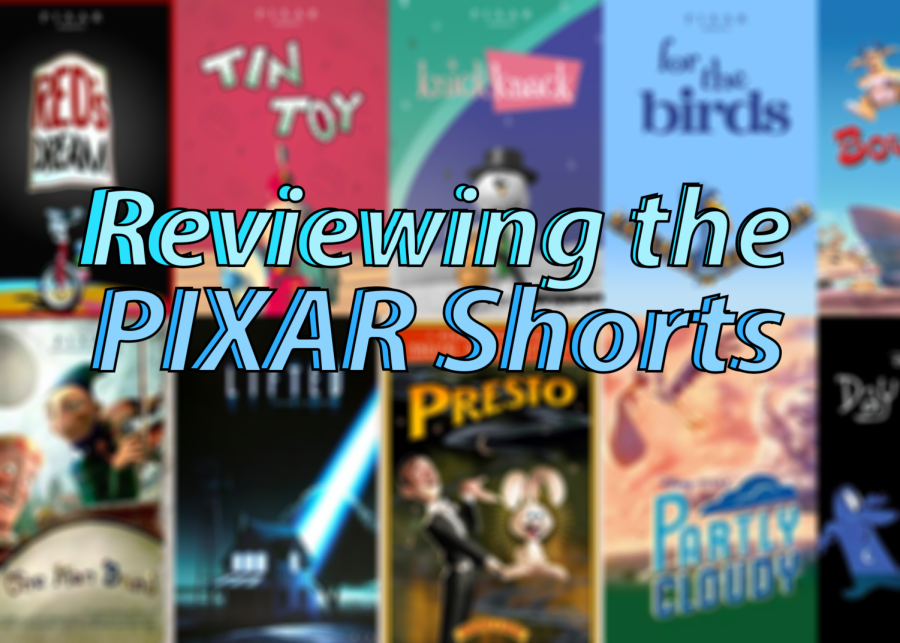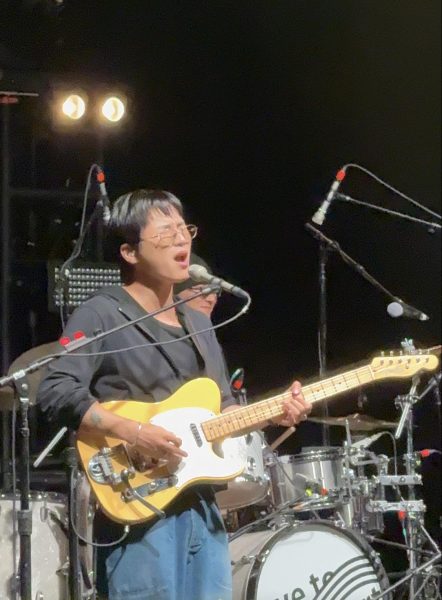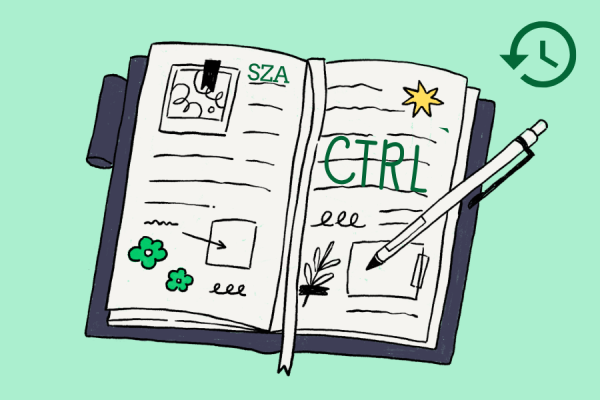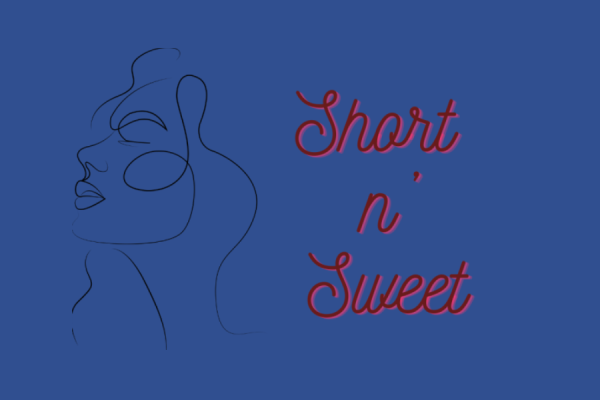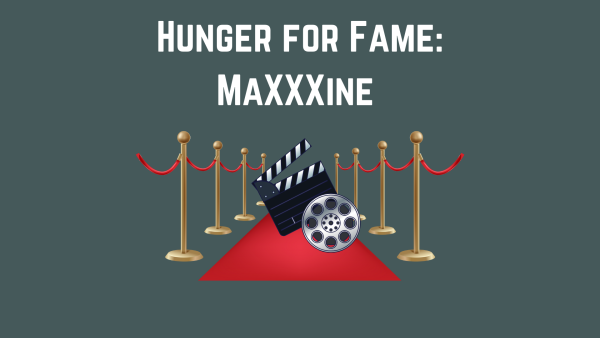Reviewing Pixar Shorts Throughout the Years
Pixar released many shorts over their lifetime as a company, but not all of them were created equal.
Ever since Pixar began releasing short animations (commonly known as Pixar Shorts) in 1984, they have been a staple of the animation industry. Lighthearted stories, feel-good moments, and charming visuals are all par for the course in these endearing examples of the animation titan at its best. From a cultural perspective, these happy tales became synonymous with childhood for millions of fans. And from a practical perspective, Pixar shorts allowed the company to test their production quality and technology and still have something to show for it. The company started their career making these brief clips, and even as they transitioned into feature films with Toy Story, they maintained the practice of honing their craft by making these bite-sized morsels of entertainment. These shorts do not involve the typical characters from the films, and for this list in particular we won’t be rating ones that include said characters like Mater and the Ghost Light. Eventually, fans would come to expect a unique and original short animation ahead of every Pixar feature-length film. But after Incredibles 2, Pixar made the unfortunate decision to stop featuring their new shorts at the start of Pixar films. As of the release of Toy Story 4, all subsequent shorts are only being released onto Disney+ and without much fanfare. You may have heard of Forky Asks a Question, Dug Days, or Cars on the Road, but then again, you probably haven’t. All three are Pixar short series from the past three years, and all three are similarly unremarkable when compared to the great legacy of Pixar’s pre-2020 shorts. That being said, in this article we’ll be remembering every theatrical or home-release Pixar short, and putting in our own two cents on each of them.
The Adventures of Andre and Wally B (1984)
This endearing if dated piece may not have stood the technological test of time, but in 1984, this one-minute-30-second short was groundbreaking. The team behind it would later become known as the company that is now Pixar, and the company would likely have never existed had it not been for this simple short. It’s easy to see why this short sparked the film industry’s interest in computer animation, but today, the short is more of a piece of history that mainly serves to show just how far computer animation has come in the last forty years.
Luxo Jr. (1986)
Unlike its predecessors, Luxo Jr. still stands the test of time as an animation. In one fell swoop, this work created the iconic “Pixar Lamps” and proved to the animation industry that computer animation could become art without replacing it. Luxo Jr. also shows just how impactful silence can be in a work of animation, and how much more meaningful sound becomes when it’s used sparingly. And it’s still enjoyable to watch, even all these years later. Like many other shorts, it also explores the often heartwarming connection between parents and children, which is always a welcome feature of Pixar works, and would become a very common theme at the animation titan as the years went on.
Red’s Dream (1987)
This notably lengthier short starts strong, with a realistic evocation of a cityscape at night, complete with pouring rain and a noirish saxophone soundscape to accompany it. We then focus on a lonely unicycle, alone in an artfully desolate bike shop. So far, so good. But things get quickly out of hand when we are introduced to the first of many terrifying Pixar humans – a lumpen and horrifying clown character that will haunt your nightmares – much in the way it seems to haunt that poor unicycle. Remove the clown and it’s a masterpiece, but with it, it’s another story.
Tin Toy (1988)
This short continues the trend of terrifying human characters with perhaps the most legendarily horrifying character the company ever produced – that baby. I can think of only a select few characters that have haunted children’s dreams as much as that monstrosity, what with its evil gremlin face, absurdly wrinkled face and uncannily animated diaper. But terrifying creatures aside, this short is most notable for being the inspiration for Pixar’s first feature film, Toy Story, which was initially pitched as a Tin Toy sequel. Luckily, cooler heads prevailed and it didn’t end up as a sequel to this frankly disturbing short, but this five-minute curio remains of interest to anyone interested in computer animation and Toy Story – a fascinating precursor of what was to come.
Knick Knack (1989)
Yet another precursor to Toy Story was this lighthearted and comedic tale of a snow globe attempting to escape his globe to meet the woman of his dreams. This reliance on toys in their early days was due to the team’s reluctance to animate humans – toys expressed much of the same emotion as a person but did not require realistic texturing and could be exaggerated without falling into the uncanny valley. Knick Knack avoids the pitfalls of Tin Toy by eliminating humans altogether, and thus it stands as their most accomplished to date. Funny, vibrant, and well-animated, it stands as a classic within Pixar’s library and was a particular favorite of mine as a child despite its crude nature.
Geri’s Game (1997)
A classic growing up, this charming and whimsical tale of an old man playing chess with himself is one of the most well-remembered Pixar shorts, in part because its protagonist would later show up in a memorable scene in Toy Story 2. While not much happens in this piece, it’s nevertheless an interesting watch and the lead character is very endearing and entertaining on screen. This particular short has also received a myriad of amateur live-action versions, which shows how inspirational the creation has been.
For the Birds (2000)
This sunlit and wordless tale of birds on a wire was a staple of many classes in middle school – at least 4 teachers I had showed this to us as a lesson in empathy. However, I was never a big fan of this short. Sure, it’s decently funny, but I find the character designs oddly unappealing, and overall it’s just lost what little charm it had. Perhaps it’s from seeing it too much, but I don’t know if I ever liked it in the first place. Plus, what’s with the Pixar shorts department’s odd obsession with pink and de-furred animals? Two shorts in a row from this time period feature this oddly specific trope, and it just so happens that they are two of Pixar’s worst. At the very least, For the Birds shows us how far Pixar has come in animation in the last 20 years (just compare Piper’s amazing birds to the For The Birds birds, and you’ll see what I mean).
Boundin’ (2003)
Boundin’ looks like a cheap used car ad and feels like a stomach bug. This animation is a significant point of childhood trauma for me, and I imagine many others can say the same. Something is deeply wrong with Boundin’. Be it the disturbing face of our “hero” the sheep, the complete rock-hardness of the sand in the desert, or the general feeling that everything in this animated world is covered with a thin layer of fuzz, something about this animation makes me physically sick. In my perfectly biased opinion, it is unreasonable that this sickening animation was released alongside the animated masterpiece, The Incredibles. Why did the studio decide to make this sickening plush-painted piece when better animation tools were clearly available to them? And why did Pixar de-fur two pathetic animals in a row between For the Birds and Boundin’? Oh, and did I mention that the stupid “bound and rebound” song drives me insane too?
One Man Band (2006)
This animation that accompanied Cars is one of the company’s most music-driven shorts – a fast and comical tale of two one-man-bands who vie for a girl’s money. The music, by Michael Giaccino, is typically excellent, and the manners in which the duo fight is appealing. Unfortunately, the animation hasn’t aged as well as other shorts – everything has a peculiar and ugly plasticine look. Get past this, though, and you’re rewarded with a fantastic little piece of animation comedy.
Lifted (2007)
Lifted has always been one of my favorite Pixar short films. It’s lighthearted, funny, and relatable, and even though it’s about aliens, it’s undeniably human. The twist ending gets me every time, and the sound design is impeccable (along with the animation, of course). The massive row of totally identical switches is one of my favorite elements of the short, and I actually find it funnier and more relatable all these years later. It reminds me of working a hopeless job where one only pretends to understand the overwhelming quantity of tasks assigned to them. Kind of like school!
Presto (2008)
At its core, Presto uses animation’s lack of traditional limitations to create a fun, whimsical, and magical atmosphere. The story follows the adventures of a famous magician attempting to pull a simple rabbit-from-the-hat trick on stage. However, his furry friend is hungry and refuses to cooperate. Wacky hijinks ensue. The short cleverly plays with the teleporting hats that the magician has, with objects flying in and out of them in a frenzied fashion. The price is definitely a must-watch as far as Pixar goes, and it is largely unmatched in its clever use of the animation medium.
Partly Cloudy (2009)
Like many Pixar works, Partly Cloudy starts off with a simple premise and looks at it from a unique perspective. In the world of Partly Cloudy, storks deliver babies to homes all over the world. But not only do these avian adventurers bring human babies to the cradle, they also deliver animal children. As you can imagine, this involves a lot of puppies and kittens, who storks are understandably happy to carry around. But it also involves some less-than-appealing delivery jobs, like baby sharks, little electric eels, and tiger cubs. One stork and his baby-forming cloud take on these tough jobs together, and as you can imagine from Pixar, their story is heartwarming and funny. It’s the very essence of what these shorts are all about.
Day & Night (2010)
This short endearingly mixes new and old animation together in a way that can only be described as fascinatingly creative and new. At this point in Pixar’s animation capabilities, creating a high-quality short was less about making realistic animation and more about telling a creative story. This animation shows off Pixar’s cleverness in that department perfectly. It’s animated with an appealing mix of hand-drawn and computer-generated textures, telling a fascinating and abstract story that is so simple yet so fascinating to watch. While the silhouettes of Day and Night may be hand-animated, within them are lovingly rendered 3D landscapes that create a beautiful and appealing combination of style in service of a simple but timeless story.
La Luna (2011)
Of the recent Pixar shorts, this one has to be my favorite. Taking the approach of a legend or creation myth with a modern spin, this endearing piece explores family relations (an increasingly common theme in Pixar shorts, and always a staple) and posterity with as light and sensitive a hand as the beautiful soundtrack seems to have been conducted with. Technologically, it shows off how well Pixar has mastered lighting and human expression in its works. La Luna is interesting, meaningful, clever, heartwarming, and beautiful to look at: it’s everything that a Pixar short should be.
The Blue Umbrella (2013)
The most amazing thing about watching these shorts in order is that the increase in the quality of animation is so incredible. The company has come a long way from the plasticine characters of Andre and Wally B, and that progression is best seen in this startlingly beautiful and realistic work. Although the titular umbrella and his red love interest are cartoonish and cute, the world in which they reside is detailed and appears live-action upon first viewing. But in fact, the entire thing was computer animated, despite every raindrop, building, and weary pedestrian appearing photorealistic. It’s stunning and it serves the story beautifully – lovingly crafted and incredibly moving while still remaining cute with stunning animation to match. By simulating reality and then playing with it, Pixar subverts our expectations and creates amazing art.
Lava (2014)
I really don’t mind Lava. It’s a feel-good short about finding your soulmate, and it’s set within the endearing life of two mountains/volcanoes. All in all, there isn’t a problem with the short itself, but to me, Lava has always felt just a little bit less genuine than other Pixar productions. Maybe it’s the lack of human-ish characters with whom to sympathize. The volcano characters have human faces and features, but they don’t have much in the way of human expression beyond the face, and even that is limited. Maybe it’s just my experience: I watched this short in the theaters alongside aDisneyy family (if you know, you know). So for me, Lava has always failed to capture that old, iconic Pixar short feel. I’m also not a huge fan of the song that the short basically centers around, but maybe that’s just me.
Sanjay’s Super Team (2015)
Unfortunately, like many recent Pixar shorts, Sanjay’s Super Team cannot be found for free on youtube and must be purchased or viewed on a streaming service instead. This is unfortunate, since the short has received a lot of positive support over the past few years. And from what I can tell, it seems to convey a very important message about culture between generations that is specific to Hindu culture while also being universal enough to be understood by everyone. This is why it’s such a shame that these sub-ten-minute shorts are locked behind three-plus dollar paywalls or subscriptions. At that rate, you’re paying about 50 cents a minute, which seems a little silly for something of that length. Pixar, please make your more recent shorts accessible for free.
Piper (2016)
It seems like Pixar just can’t make enough short animations about parents and their kids, and Piper follows this theme. Still, I’m not complaining: these shorts clearly come out of a real place of tenderness and love. Piper, like its predecessors, strikes the same compassionate and truthful cords. And its focus on the experience of one small bird son makes this animation an even more personal, fantastic, and joyful story that many can relate to. As someone who personally has been afraid of the ocean for a long time and is only recently graduating from this fear, Piper makes me feel very seen by the Pixar team. On top of that, you have possibly the most beautiful animation the company has produced – smooth, realistic, and impossibly cute. The bird protagonist has such an appealing design and it contrasts expertly with the realistic environments around it. The sand looks so photorealistic, you almost believe it to be real, and I am sure that many young children watching thought the short was live-action. It really does show how far the company has come since the beginning, from plasticine toyetic models and uncanny cartoonish clowns to remarkably realistic birds and beaches.
Lou (2017)
I’ve always considered the old Pixar shorts to be a little bit more genuine than the newer stock of short films. However, Lou magnificently dispels all of my previous biases against the more recent pieces. Lou is fun, fluid, joyful, and truly heartfelt in a way that few other mediums can aspire to be in such a short amount of time. It accompanies Toy Story 4 well, and in some ways could be considered better. The story follows a cruel bully who steals from his playground playmates but is soon taught a lesson by a creature who lives in the lost-and-found. Our box-dwelling hero sets Lou on the right path by showing him the gratification that comes with compassion, and soon the bully has become a sympathetic and caring individual who learns to love helping others and standing up for those who cannot stand up for themselves. This short reminds us that we are all only human, even when we try to seem callus or aloof.
Bao (2018)
This is the most recent short that the company has produced, and this 2018 slice of magical realism accompanied The Incredibles 2 – after this, the company stopped their practice of accompanying theatrical films with animated shorts. Maybe it’s fitting that this concept ended with this animation, as it is undoubtedly one of the company’s finest. A beautiful allegorical story of an overprotective mother who contends with a bao bun son who disobeys her. Many found the storyline disturbing or shocking (at some point the mother consumes her all-too edible son), but I found it startlingly true and honest – it seemed to come straight from the heart and tells a story that is deeply personal. The art style also comes off as personal – it looks nothing like the other Pixar shorts, instead coming off as sketches from director Domee Shi’s notebook, possessing a delightful and unique style that earmarks it as different from any other shorts in their catalog. It’s a heartwarming but also intense and raw story, taken straight from the heart like any good fable should be. And while it’s sad that it’s their last short, at least Pixar certainly went out with a bang.
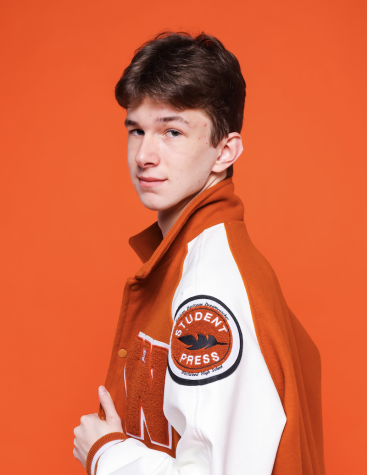
Class of 2023
I am currently Westwood Horizon's video editor, and also one of the hosts of Friendcast, our website's podcast video series. In addition...

Class of 2023
Hi! As a lifelong reader and writer, I am excited to join the Horizon team this school year. On the page, in the debate room, or on the...


